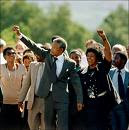Bishop’s University School of Education
EDU 305 A05 Social Justice, Integrative Antiracism and Multicultural Education
Instructor: Dr. L. Taylor
Office: N307
Phone: (819) 822-9600 extension 2344
Email: ltaylor@ubishops.ca
lisataylorbishopsu@gmail.com
Office Hours: Wednesdays 12:00 - 4:00 PM
Or by appointment
Seminars: Wednesdays 7:00 - 10:00 PM
Room N 312
Individual meetings: By appointment
INSTRUCTIONS FOR CLASS 1 (SEPTEMBER 3, 2008)
1. View Le Rouge et le Noir en service du Blanc for discussion Class 2.
2. Read Course syllabus thoroughly for Class 2 (2 handouts, one with class schedule & readings, one with description of / instructions for course assignments).
3. Form groups of 4-5 for 3 course assignment (could be same group for 1st 2, possibly for all 3).
**NOTE: there can only be 5 Film presentation groups**
a. The 5 films we will study in this course are:
i. Alexie, S. (1998). Smoke Signals. Miramax. http://www.fallsapart.com/smoke.html;
ii. Bamboozled directed by Spike Lee;
iii. Under One Sky directed by Joy Kawaja;
iv. Chasnoff, D. & H. Cohen. (1996). It’s elementary. San Francisco: Women’s Educational Media; Black, S. (2001).
v. Life and Debt. Tough Gong Pictures. http://www.lifeanddebt.org/.
b. With your group you should read about the 5 films and make your top 3 choices to be emailed to me by September 8. I will assign groups their films based on a first-come-first-served basis.
4. Make sure you are checking your BISHOP’S EMAIL EVERY WEEK a couple days before each class as I will be sending out certain readings online (to control the cost of the reading package).
5. You should also familiarize yourself with the class blog where I’ve posted this same information: http://edu305b.blogspot.com/
See you Wednesday September 10 (I will be back on campus September 9).
Dr. Lisa Taylor
Monday, September 1, 2008
Subscribe to:
Post Comments (Atom)




2 comments:
I hope I'm not just posting this to nowhere, it seems as if there hasn't been much activity on this blog in a while.
I had the opportunity two weeks ago to look at an old copy of the Encyclopedia Britannica. Whenever such an opportunity arises I always find it interesting to look at old perspectives on currently relevant issues.
On a whim, I looked up 2 topics, "The Negro" and the very small section devoted to "Indian tribes" in the entry on Canada.
Thinking about how institutional discrimination helps to normalize stereotypes brought me back to these quotes and the fact that, especially in 1911, the Encyclopedia Britannica would have been a respected authority of truth and thus, that the excerpt below, which now seems ridiculous and unbelievable would, less than 100 years ago, have been taken as absolute truth of how things are.
I include only one quote for the moment, but in the morning I'll try to remember to post the native peoples quote as well.
We are not so far removed from things as some may like to think.
Encyclopedia Brittanica, ed.11 Vol 19, pg 344, New York 1911
"The Negro" (except)
"... Mentally the Negro is inferior to the White. The remark of F. Manetta, made after a long study of the Negro in America, may be taken as generally true of the whole race: "The Negro Children were sharp, intelligent and full of vivacity, but on approaching the adult period a gradual change set in. The intellect seemed to become clouded, animation giving place to a kind of domesticity, briskness yielding to lethargy." We must necessarily suppose that the development of the Negro and the White proceeds on different lines. (...) The arrest or even deterioration in mental development is no doubt very largely due to the fact that after puberty sexual matters take the first place in the negro's life and thoughts."
It also later says:
"Though the mental inferiority of the Negro to the White or Yellow races is a fact, it has often been exaggerated."
Encyclopedia Brittanica, ed.11 Vol (3 or 4, I forgot to write it down) pg 165, New York 1911
On "Indian Tribes" in Canada
"In her treatment of the aboriginal inhabitants of the country(numbering 93,318 in 1901) Canada has met with conspicuous success. Since the advance of civilization and indiscriminate slaughter have deprived them of the bison, so long their natural means of sustenance, the north west tribes have been maintained chiefly at the expense of the country. As a result of the great care now used in watching over them there has been a small but steady increase in their numbers.Industrial and boarding schools, established in several of the provinces, by separating the children from the degrading influences of their home life, have proved more effectual than day schools for bringing them into the habits and duties of a higher civilization."
That paragraph was almost all there was on the subject too. We have learned in some ways that these perceptions are wrong, but looking at the traditional view of native peoples we can still pick up on the modern stereotypes that we talked about in class: that they cannot take care of themselves and that success only comes as a product of the intervention of "higher civilization"; that sense of ownership that's carried in the words; the view that they are not numerous groups of distinct cultures, but one subclass of human who are essentially all the same.
I think it's just interesting to look at where we were in relation to where we are, and how that's shaping where we're going.
Post a Comment